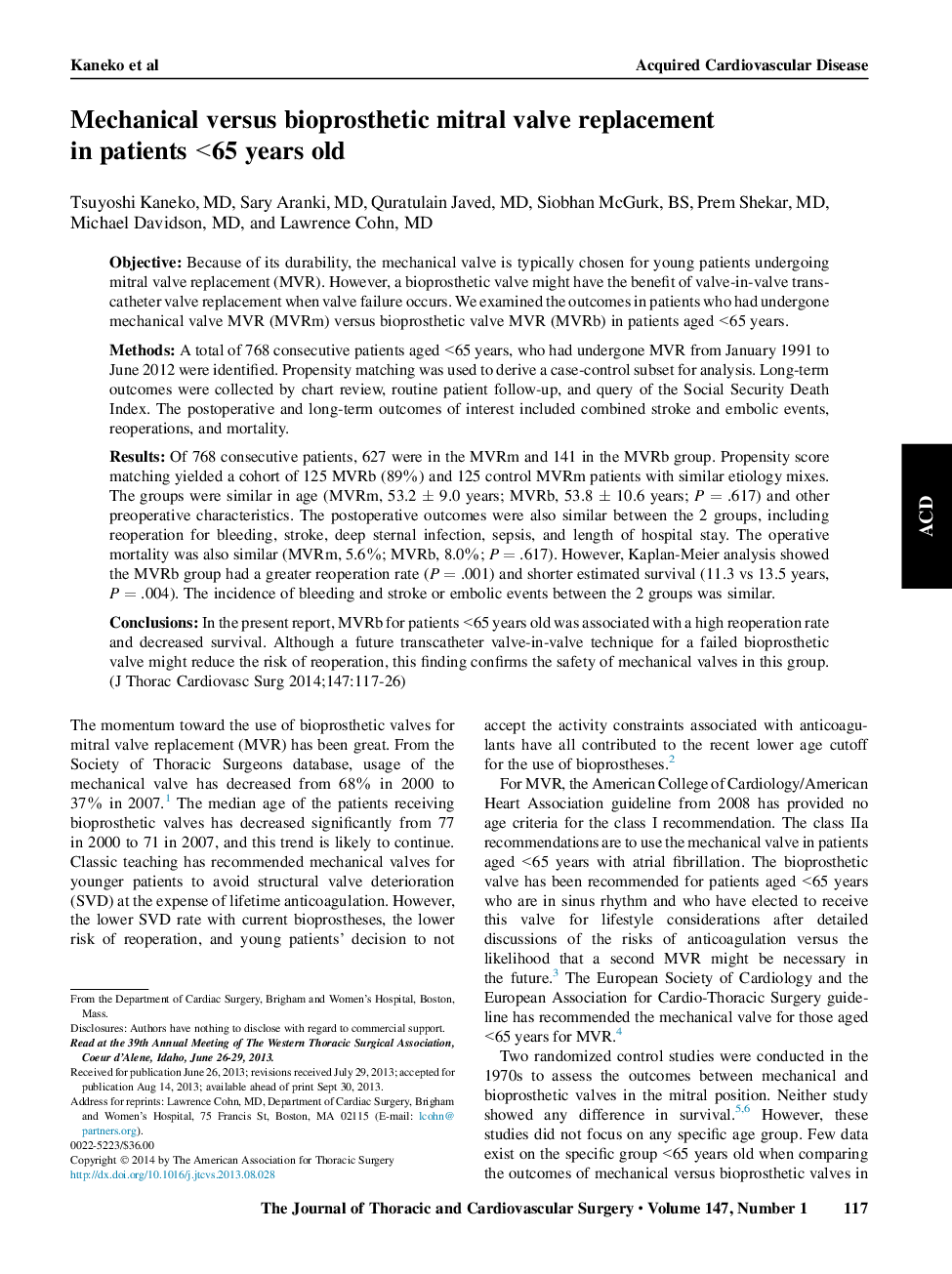| Article ID | Journal | Published Year | Pages | File Type |
|---|---|---|---|---|
| 2980568 | The Journal of Thoracic and Cardiovascular Surgery | 2014 | 10 Pages |
ObjectiveBecause of its durability, the mechanical valve is typically chosen for young patients undergoing mitral valve replacement (MVR). However, a bioprosthetic valve might have the benefit of valve-in-valve transcatheter valve replacement when valve failure occurs. We examined the outcomes in patients who had undergone mechanical valve MVR (MVRm) versus bioprosthetic valve MVR (MVRb) in patients aged <65 years.MethodsA total of 768 consecutive patients aged <65 years, who had undergone MVR from January 1991 to June 2012 were identified. Propensity matching was used to derive a case-control subset for analysis. Long-term outcomes were collected by chart review, routine patient follow-up, and query of the Social Security Death Index. The postoperative and long-term outcomes of interest included combined stroke and embolic events, reoperations, and mortality.ResultsOf 768 consecutive patients, 627 were in the MVRm and 141 in the MVRb group. Propensity score matching yielded a cohort of 125 MVRb (89%) and 125 control MVRm patients with similar etiology mixes. The groups were similar in age (MVRm, 53.2 ± 9.0 years; MVRb, 53.8 ± 10.6 years; P = .617) and other preoperative characteristics. The postoperative outcomes were also similar between the 2 groups, including reoperation for bleeding, stroke, deep sternal infection, sepsis, and length of hospital stay. The operative mortality was also similar (MVRm, 5.6%; MVRb, 8.0%; P = .617). However, Kaplan-Meier analysis showed the MVRb group had a greater reoperation rate (P = .001) and shorter estimated survival (11.3 vs 13.5 years, P = .004). The incidence of bleeding and stroke or embolic events between the 2 groups was similar.ConclusionsIn the present report, MVRb for patients <65 years old was associated with a high reoperation rate and decreased survival. Although a future transcatheter valve-in-valve technique for a failed bioprosthetic valve might reduce the risk of reoperation, this finding confirms the safety of mechanical valves in this group.
